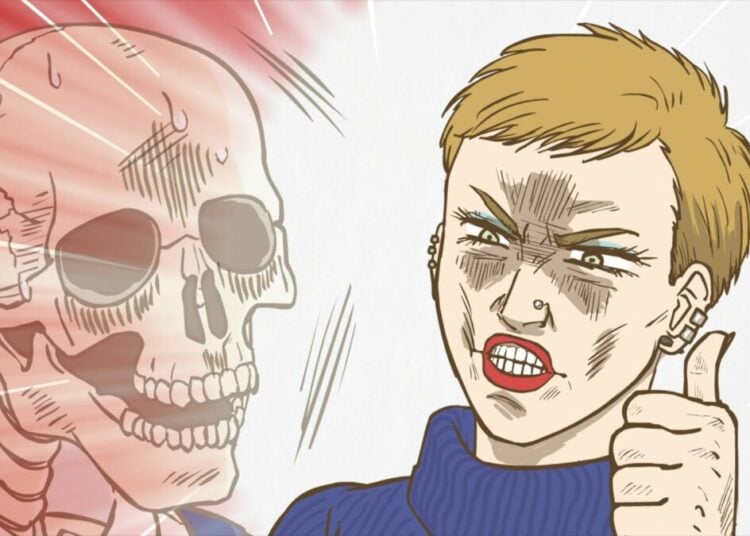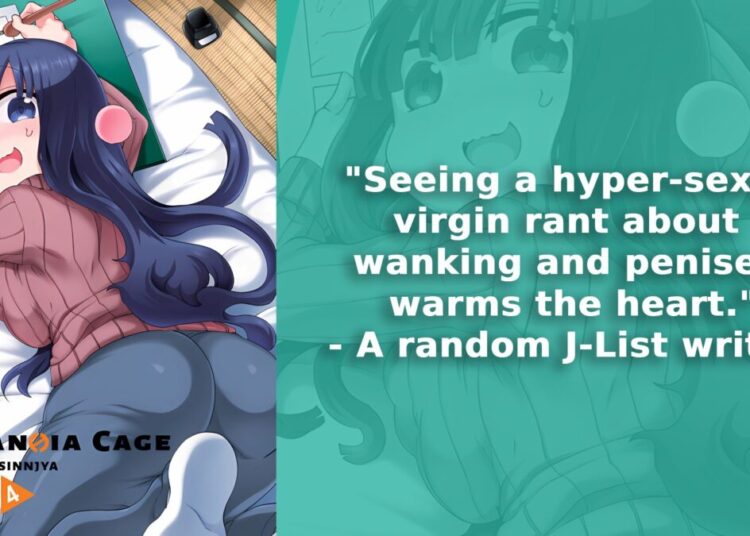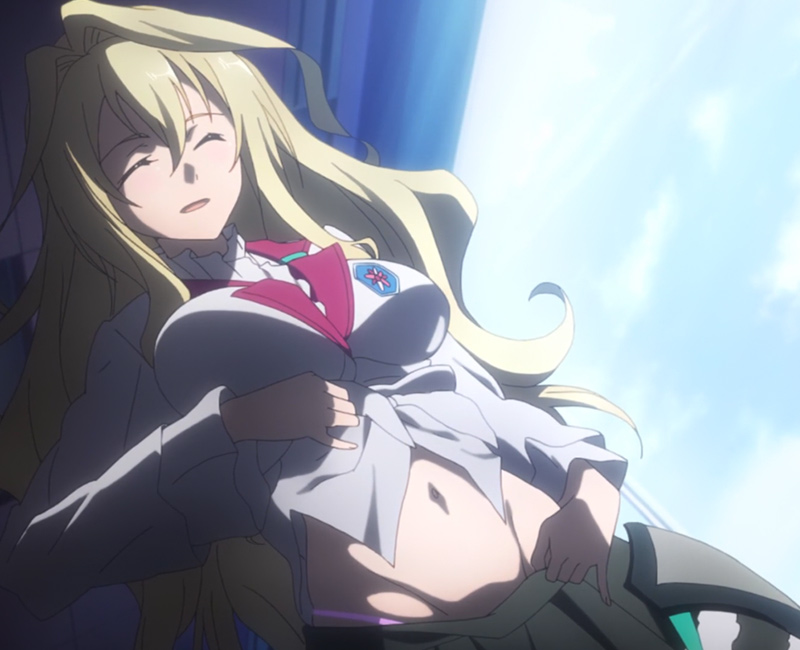When people say “representation matters” they are correct. No matter who someone is, they love to see themselves in the media they enjoy, whether it be creating their own character in games such as Skyrim, or even something as trivial as having the same zodiac sign as their favorite celebrity. For example, I love getting to say I have the same birthday as Nobuo Uematsu, the composer for most of the Final Fantasy soundtracks. It makes me feel a little more connected to one of my favorite game series.
Representation matters, but commonly neglected is that the right representation is what leaves the most positive impact on an audience. I was 16 when I had come out, and I remember for the longest time not sure where I fit in when it came to anime or other nerdy crowds. Video games were cool, and shonen manga was fun. Cosplay allowed more creative freedom. Still, I felt a bit left out since I wasn’t really talkative with other guys about waifus or who was Best Girl™️.
Yaoi and Boy’s Love (BL) crowds were actually worse. Never had I lied about my sexuality if it was asked as I saw no reason to. With that said, I have lost track of how many times yaoi fans would say “That’s hot,” or “Cool. I love The Gays™️.” The most insulting, and most common comment I ever got was when if the family was mentioned. To which yaoi fans would almost always say “You have a twin? Dude! Twincest is the best!” Even after explaining that incest is a very sensitive topic due to abusive relations I’ve had with my brother, most have said: “That’s even hotter.”
How anyone could find it appropriate to tell someone the idea of them being in an abusive, incest relation is attractive— I will never understand.
To this day (with a few exceptions), I still don’t like BL. I find it hypocritical that it’s predominately a female created genre for the female gaze that fetishizes homosexuality. It’s cringe-worthy how popular titles such as Junjou Romantica, The Tyrant Who Fell in Love, Hyakujitsu no Bara, or Ai no Kusabi are filled with rape and other tropes that often glorifies abuse and harassment, and then still try to depict couples as having healthy relationships. I hate that ten years later, at age 26, I still have to hear “Twincest is hot,” every time the wrong person learns I have a twin brother. Also, in 45 years since the genre started, no one can draw characters with appropriately sized hands.
I was in college when more openly gay male artists had started publishing manga independently, Mentaiko and Gengoroh Tagame being the most widespread at the time, only by fan translations. For the first time, I started to like BL because there was a connection to be felt, knowing that the creator was someone who had probably dealt with the same struggles, same emotions, and experiences I had growing up, and with a male audience in mind for their manga. Hence the BL sub-genre, Bara. While “bara” is also the Japanese word for ‘rose,’ the flower itself is used to represent male love in their culture. Almost all of it is pornographic, but there was always a few one-shots and mini-series in the mix that talked about a lot of common struggles, from fear of coming out, family and friend issues, internalized homophobia, etc. If nothing else, at least characters didn’t have giant hands.
So without further ado, here are five noteworthy male BL/bara artists worth following.
Draw Two
https://twitter.com/d_raw_two/status/1107244833926602752
Draw Two started with all of his works published independently on his Pixiv in 2009. Artwork featured nameless characters, usually just in erotic poses/situations. At the turn of the decade, Doroutsu’s skill level saw growth and him starting to publish mini-series and one-shots on the same site. Now, he is a fully published mangaka working at Media-Soft, putting out a new book every year. In addition, his recent one-shots are featured in anthologies and Charles Mag from the same publisher.
Common themes in his comics include sports clubs, anthropomorphic characters, contemporary work relations (police officers, manual laborers, office jobs, etc), yokai, and feudal Japan. Draw Two has also drawn both tame and pornographic fanart of Ace Attorney, Tokyo Afterschool Summoners, Osomatsu-san, Pokemon, Dragon Quest, Kill la Kill, and Spider-Man. Promotional illustrations for his books and fanart are still uploaded to his Pixiv regularly.
You can also follow him on Twitter, but please remember to be courteous. He does not understand English.
Fun Facts: Doroutsu is a fan of the Japanese rock group, Man With a Mission, Utada Hikaru, and owns several Pokemon plushies.
Mizuki Gai
設営完了しました。今日は宜しくお願いいたします。 pic.twitter.com/6pxtkviiEN
— 水樹凱 (@mizukigai) August 11, 2018
Active since 2004, like many pornographic artists, Mizuki Gai started off as a doujin artist. While he has made original one-shots, most of his noteworthy original content didn’t happen until post-2010. He’s done fanwork for Final Fantasy XV, Kill la Kill, Tiger & Bunny, Attack on Titan, Voltron, and the Fate series. In his original stories, Mizuki Gai loves to create content involving street thugs, gang leaders, and especially yakuza members.
Currently, almost all of his material is available for sample viewing on his Pixiv, and very little in published anthologies. The majority of his stuff is published independently and sold by himself at fan expos or through his online store. Everything has been released under his Rycanthropy name brand which he manages from his personal blog (Japanese only).
Fun Facts: Mizuki Gai plays Fate/Grand Order and Tokyo Afterschool Summoners. He is also a fan of Dragon Quest and Devil May Cry, and has two pet cats.
Dainyu Dougumo
https://twitter.com/dainyudougumo/status/754654365130985472
Dainyuu Dougumo is one of the newest artist emerging into the bara scene, having published five one-shots in the last four years. He is another illustrator who originally started off with fan work as early as 2010. In his case, he loved drawing Pokemon and Mega Man characters. His fourth one-shot, listed as the first of a series titled 「セルプロ!」(lit. Cell Pro!), and has also done freelance illustration for event advertisements.
Interesting enough, Dainyuu is one of few male artists who has explicitly outs himself on all of his social media descriptions.
For his creative process, Dainyuu has stated he prefers drawing larger, more hyper-masculine characters in the top role. For the bottom role, he draws characters with his idea of a cuteness, but still with a manly physique. He has also commented on fan’s requests for drawings featuring sexual assault scenes, stating that he has no intention to ever do so as he finds it uninteresting.
Nearly all of his illustrations and samples of his one-shots can be viewed on between his Pixiv and his Twitter. Currently, all of his work is exclusively digital and can be purchased through his online store. Dainyuu has also opened a Pixiv Fanbox and a Patreon where fans can make a small monthly donation in exchange for exclusive illustrations.
Although nothing has been released in print, Dainyuu has said he would like to continue his work for the next several years and be able to attend events as a guest or a vendor in the near future.
Fun Facts: Dainyuu loves to play of Fate/Grand Order, Phantasy Star Online 2, and Granblue Fantasy, and has drawn fanart for all three, as well as Street Fighter.
Gengoroh Tagame
韓国のゲイ雑誌「DUIRO」のクラウドファンディング用に描いたこの絵のタイトルは「ムクゲ 무궁화」です。韓国の国花だというムクゲの花を背景に、カップルの片方に日本の伝統下着である六尺褌を着せることで、国や立場を越えて愛で結ばれる希望の姿を描いたものです。 #好きです_韓国 #좋아요_한국 pic.twitter.com/cIfIOnCXzo
— 田亀源五郎 Gengoroh Tagame (@tagagen) August 6, 2019
Of all the artists listed, Gengoroh Tagame is the most impactful. Tagame has been in the manga business since 1984 and held about every job possible. He’s been a freelance graphic designer and illustrator, as well as an art director. By the mid-90s he had become a full time gay erotic artist, working for various magazines such as G-Men, and doing novel illustration. His work as been featured in solo exhibits in Japan, Europe, and even America as early as 1995.
Tagame is regarded as the master of S&M work, himself being greatly influenced by European illustrator, Tom of Finland. In recent years, alongside his continued pornographic work he has written two all-age appropriate manga series. The first one titled My Brother’s Husband tells the story of a Canadian man who travels to Japan to meet his late husband’s Japanese family as a way to honor his lover’s dying wish. The series has been praised highly in both Japan, and in English speaking countries for its artwork and showing homophobia in Japan, just how all any form homophobia is hurtful not just to those it targets, but also those spearheading it. My Brother’s Husband concluded after four volumes and was adapted into a short run live-action series.
His second all-age series,「僕らの色彩」 (lit. Our Colors) started in early 2018 and is ongoing. The story is about a high school boy still learning about what it means to be gay while struggling with the feelings he has for his best friend. One day when he walks into a new cafe, he meets an elderly man who just might be openly gay, himself… With themes such as mentorship, internal conflicts, and self-doubt, Our Colors is every bit as wholesome as My Brother’s Husband.
Fun Facts: Tagame understands a fair amount of English, having traveled to North America and Europe on several occasions. His favorite gay erotic artist is Sanshi Funayama. He has also worked as an art historian, has edited two books on gay Japanese erotic art.
Mentaiko Itto
https://twitter.com/ittorasii/status/1163745546093285376
Possibly the most celebrated bara artist, Mentaiko Itto got his start publishing digital CG collections which he titled Monthly Mentaiko. Afterward, he went on to self-publish a series of one-shots called Itai! Itai! Itai! telling the story of high school boys coming to terms with their sexuality and repressed emotions. Sadly, he dropped it after only four chapters. Now, he is about to publish the seventh installment to Priapus, a series about a sex god sent on a mission to end mankind’s wicked ways by turning every man alive gay, thus killing any chance for repopulation. He also has continued to write one-shots regularly between series installments. Mentaiko has created fanart for series such as Fire Emblem, Final Fantasy, Persona, and Naruto. Like previously listed artists, all of Mentaiko’s works are self-published and sold at fan expos and his personal webshop (tho, I have seen a few of his works for sale in secondhand comic shops in Akihabara).
Today, Mentaiko has had many of his works translated and published in English by Bruno Gmünder — Gay Manga, including a poster book.
WIP, promo, and sample illustrations of all his work can be viewed for free on his Pixiv and his Twitter.
Fun Facts: Mentaiko is a huge fan of Final Fantasy XIV and even does a fan comic as a side project from his regular work. In his personal life, Mentaiko lives with his male partner. He has four dogs and three cats.















